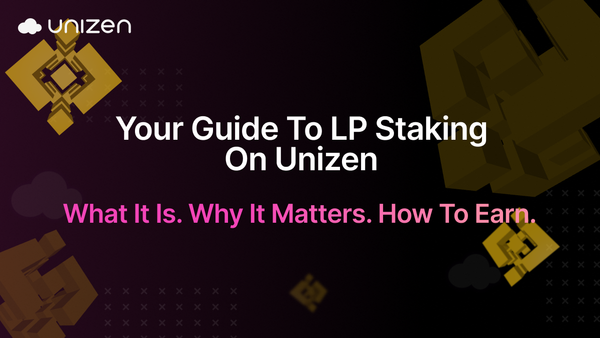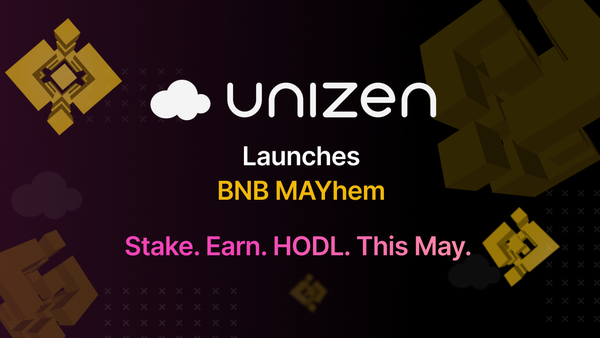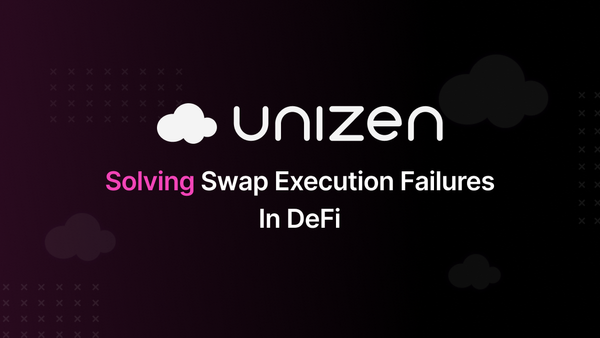How Play to Earn Crypto Games Work
Learn how play to earn crypto games are revolutionizing the gaming world in 2024 with the power of blockchain, NFTs, and tokenized economies.
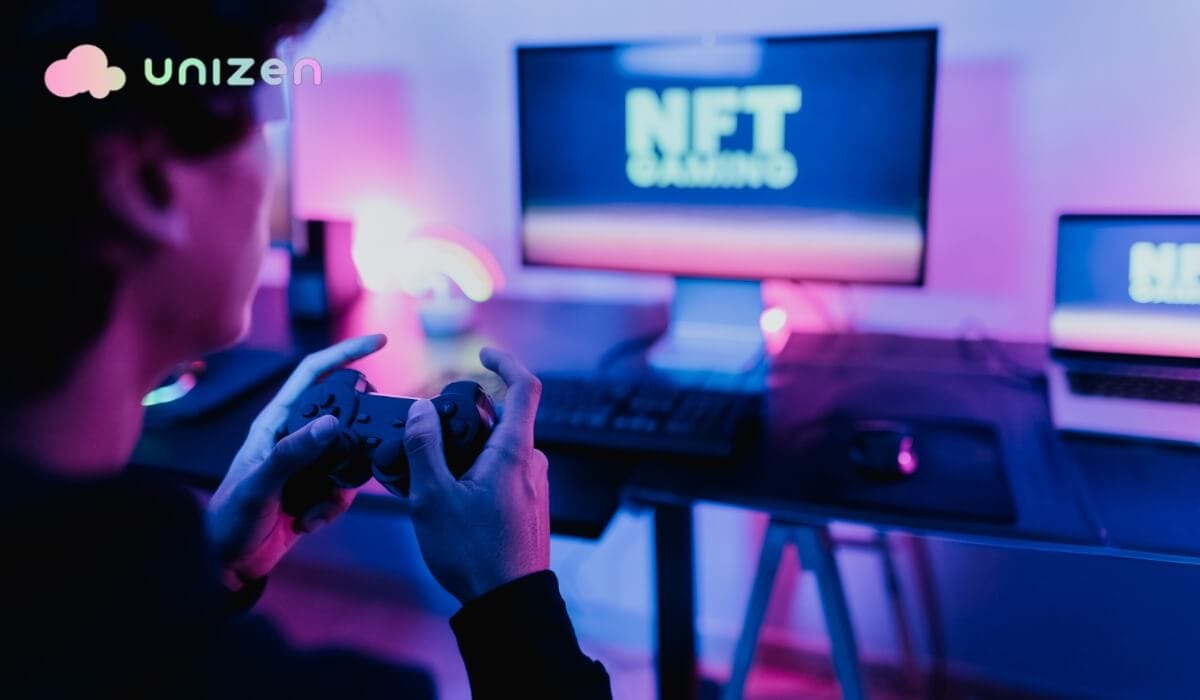
Play to earn crypto games has revolutionized the gaming world, making it entertaining and lucrative, especially in 2024. Unlike traditional video games, which often lock player achievements and assets in a centralized system, P2E (Play-to-earn) games use blockchain technology to create decentralized ecosystems in which players earn rewards and have true ownership of in-game assets.
Blockchain Technology In Gaming
Blockchain eliminates the dependency on centralized servers for control and builds transparent, secure, and fair systems. Here's how blockchain enhances crypto gaming:
- Decentralization: Players are no longer dependent on game developers or publishers to manage assets or economies. The blockchain games offer players an equal access to data and opportunities.
- Immutability: All game transactions and other virtual actions are indelibly recorded on the blockchain. This helps avoid cheating when you play a game and also allows for fair play.
- Interoperability: Blockchain allows for the movement of assets across different games or platforms, creating shared ecosystems for games. For instance, this might mean that a weapon rewarded in one game could function in another.
- Security: Blockchain's cryptography secures players' data, shields against hacking, and secures transactions. This becomes particularly vital in the context of high-value assets, such as NFTs.
The backbone of P2E gaming is blockchain, which makes a game transparent, secure, and decentralized. Every action, transaction, or asset on a play to earn gaming platform is recorded on a blockchain, and this technology allows the making of secure, player-driven economies.
It works by rewarding players with cryptocurrencies or native in-game tokens when they complete certain tasks, win battles, craft items, or achieve particular milestones. It becomes especially important when high-value assets, including NFTs, are involved.
The backbone of the P2E gaming world is blockchain, which makes a game transparent, secure, and decentralized. Every action, transaction, or asset on a play-to-earn gaming platform is recorded on a blockchain, and this technology makes it possible to create secure player-driven economies.
It works by rewarding players with cryptocurrencies or native in-game tokens when they complete certain tasks, win battles, craft items, or achieve particular milestones. These tokens can be exchanged for other forms of cryptocurrencies or fiat money on decentralized exchanges, effectively turning gameplay into earnings. tokenize assets as NFT games characters, weapons, land pieces, or collectibles. These NFTs have unique digital ownership representations stored on a blockchain, which allows players to transfer, sell, or use it in compatible games.
Economic Ecosystem Within P2E Games
The economic ecosystem of P2E games is designed to sustain player activity, incentivize participation, and generate value for all stakeholders. It works by having a dual-token system in which one token usually acts as the main in-game currency while the other is utilized for governance or long-term staking. This ensures liquidity while encouraging investment. Rewards are structured to keep players engaged, so tasks like completing missions, winning tournaments, or crafting rare items grant tokens or NFTs, forming a direct correlation between effort and earnings.
However, some play to earn games allow to incorporate decentralized finance (DeFi) elements, allowing players to stake their tokens for passive income or earn rewards through yield farming. Players can sell or buy assets freely, depending on the supply and demand balance that would drive the market. High-demand assets normally become lucrative investments.

Popular Play-to-Earn Games
Blockchain game technology has introduced a new dimension to the future of gaming through play-to-earn games. While entertaining players, they can earn real money, cryptocurrencies, and NFTs by participating in these in-game events. Here is an overview of some of the most popular and the best play-to-earn games, their unique features, and how they enable players to turn gaming into a profitable venture:
Axie Infinity
Axie Infinity is probably the most recognizable game in the list of games, often considered a pioneer in the industry. Created by Sky Mavis, it fuses Pokémon-style gameplay with blockchain technology. Players collect, breed, and battle virtual creatures called Axies. By battling their Axies in the arena, players earn Smooth Love Potion (SLP) tokens. The tokens may be sold for fiat currency, real money, or used to breed new Axies. This game has been listed as part of Quora's top play-to-earn crypto game and has been mentioned multiple times.
Axies, land plots, and other stuff can be purchased and sold at the Axie Infinity marketplace. Very rare Axies and items mostly go for a high price, and players are allowed to stake Axie Infinity Shards (AXS) tokens, which are the governance tokens of the game, and earn passive income, as well as vote on some governance decisions.
Decentraland
Decentraland is a kind of virtual world where players are able to buy, build on, and sell virtual land. It's powered by the Ethereum blockchain, where users can create an experience and make money by being creative and collaborative. Players can buy, sell, and lease land plots represented as NFTs. Land prices in popular areas of Decentraland shoot through the roof, which is one of the reasons why virtual real estate is considered a high-yielding investment. All the transactions within Decentraland are enabled by its native token, MANA. People can earn MANA by selling digital wearables, art, or experiences.
The Sandbox
The Sandbox is a community-driven, decentralized online platform where users can create, sell, and own digital assets and experiences. It fuses the creative elements of Minecraft-style gameplay with the financial depth of blockchain, including robust earning possibilities. Players utilize VoxEdit, a design tool used to create 3D assets such as avatars, vehicles, or objects. Avatars, vehicles, or in-game objects will first be minted as NFT and sold on the Sandbox marketplace for its SAND tokens. Owning virtual land permits players to host events, build games, and lease out the land to users for passive income. Players could earn SAND tokens by completing quests and challenges or participating in events organized by The Sandbox community or partners.
Examples of How Players Earn Cryptocurrencies and NFTs
- Earning Through Gameplay: In Axie Infinity, a player can earn rewards, say, SLP tokens, by completing daily missions or by winning battles. As an example, a professional gamer who can earn 100 SLP tokens every day could sell these tokens on a cryptocurrency exchange for a profit, depending on the market value.
- Creating and Selling NFTs: In The Sandbox, for example, a creator might design a unique virtual car in VoxEdit, mint it as an NFT, and then sell it on the marketplace. If the NFT gains popularity, its price could go up considerably, allowing players to earn substantial profits.
- Virtual Real Estate Profits: A player in Decentraland can buy a plot of virtual land at an early sale, create it into a highly-demanded place, and later resell it at a better price or let it out for rent. For instance, a plot that was bought for 10,000 MANA could sell for 100,000 MANA when the place gains momentum.
Well, the success of these games lies in their ability to combine engaging gameplay with meaningful earning opportunities. Each game offers diverse earning mechanisms; from battling and breeding to designing and renting, players have multiple avenues to earn. Blockchain also ensures that assets belong entirely to the players, enabling financial freedom within these ecosystems.
Benefits of Play-to-Earn Games
Play-to-earn games have transformed gaming from being just a hobby. These blockchain ecosystems allow players to receive financial rewards, have true ownership of digital assets, and even contribute to shaping the very games they love:
Players Are Fiscally Rewarded
The most appealing aspect of P2E games has to do with the prospect of income generation in the real world for participants. Unlike in other classic games where players invest their money without expecting any return in monetary form, the P2E rewards a player for investing time and skill. You can earn by gaming, which can be done through quest completion, fighting an opponent, or achieving specific milestones. These tokens can often be traded for cryptocurrencies like Ethereum or Bitcoin, offering real-world rewards. There are also new economic opportunities to gain financially. Several individuals have reported having higher earnings when compared to their jobs.
True Ownership of Digital Assets
Blockchain game technology allows players to own their characters, weapons, or virtual real estate in the games. In contrast to traditional gaming, where assets are locked into a centralized environment, P2E games give players full control. In-game items are represented as NFTs, meaning they are incomparable and unique, thus not replicable. Such tokens can be traded, sold, or even utilized in other games. You also get your value beyond the game because the tradability of NFTs ensures that even when a player decides to stop playing a particular game, their assets still hold value and can be sold in secondary markets. This makes gaming a more sustainable investment.
Community-Driven Game Development and Governance
P2E games let players' active contributions go toward mapping out the game world, and its future direction too. Most P2E platforms function on a Decentralized Autonomous Organization system, allowing players holding governance tokens to vote on significant decisions. These may include updates in games, introducing new features, or changing economic policy. Community-driven development fosters creativity and innovation. Players can propose new ideas, collaborate on content creation, and directly influence the gaming experience.
Challenges and Risks of Play-to-Earn Gaming
While P2E gaming has developed a modern trend of giving every player the opportunity to get real cryptocurrencies and NFTs for their gameplay, on the other hand, they introduce several challenges and risks that call for understanding by players, developers, and investors alike:
Market Volatility and Economic Risks
One of the most critical challenges in P2E gaming is that of market volatility. Cryptocurrencies, NFTs, and tokens in these games are so susceptible to market fluctuation-possibly resulting in wild player earnings. For example, the value of a crypto token might increase when there is high demand for it and then suddenly drop because of market sentiment, regulatory action, or any other cause outside of the game's ecosystem. The resulting volatility makes it tough for the players to look upon their proceeds as stable earnings in the first place, particularly when the in-game assets are quoted in volatile crypto.
Regulatory Concerns and Issues of Compliance
This rapid growth in the blockchain-based gaming industry raises eyebrows among regulators, who are still at a loss as to what and how to classify the game. In many countries, the application and legal status of cryptocurrencies and NFTs are yet to be determined. Some jurisdictions have classified them as securities, while others regard them as commodities or even gamble with them. These might put P2E developers and players under massive challenges, especially towards being on the right side of the law that governs such games.
Security Issues of Blockchain Gaming
Among many advantages of blockchain in gaming, enhanced security comes into play due to the technology's essence of decentralization; still, it is not without pitfalls. A smart contract, wallet, and token system security vulnerabilities might expose players and developers to fraud and hacking. Various cases of hacking attacks have included the hacking of millions of dollars worth of NFTs and tokens from P2E games, which seriously raises a question about in-game asset safety.
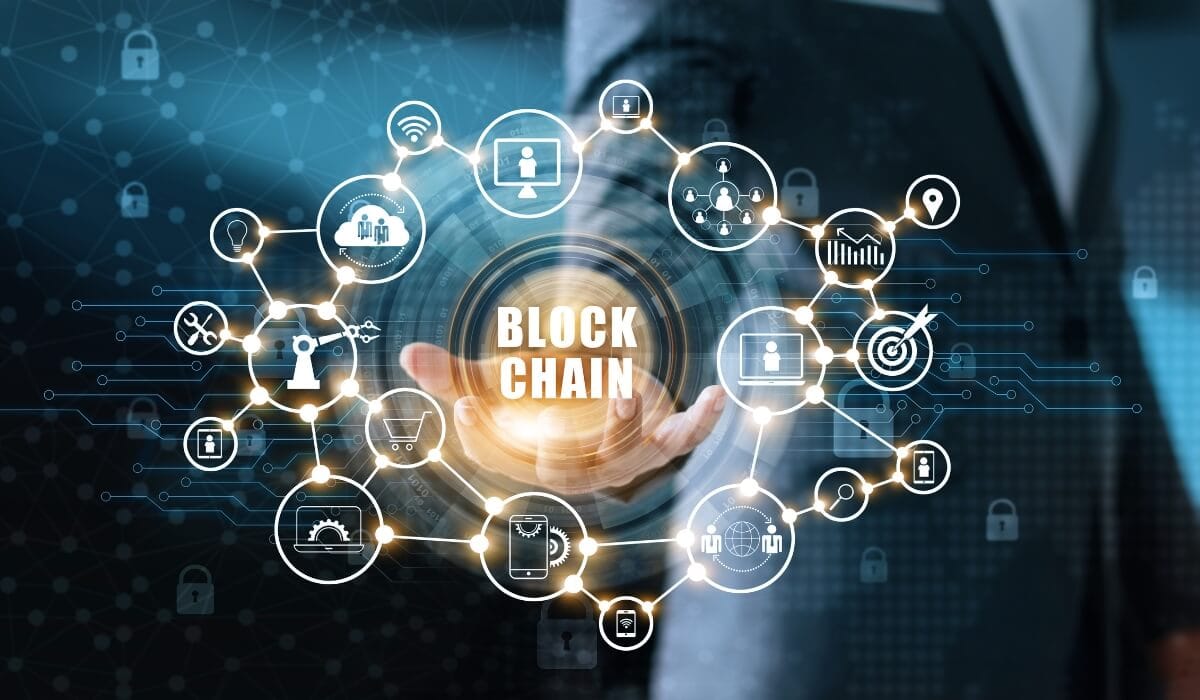
Technological Innovations in Play-to-Earn Gaming
Play-to-earn games have become a nest of technological innovation, extending the frontiers through advanced blockchain integrations and cutting-edge technologies. These ensure not only better gameplay but also security and transparency in transactions, opening the way for future trends that promise to change the face of gaming as we know it:
Integration of AI and Blockchain for Enhanced Gameplay
Artificial intelligence and blockchain together in P2E gaming are a compelling combination that provides immersive gameplay that is far more intelligent. AI-powered systems create adaptive game environments that respond to player actions; thus, making gameplay all the more engaging and personalized. AI-driven analytics can enable smarter game management by providing real-time insights to optimize in-game economies, balance token rewards, and prevent exploitation.
Smart Contracts for Secure Transactions
Smart contracts form the backbone of the P2E ecosystem, allowing self-executing, safe, and transparent processes without intermediaries. It controls the creation, ownership, and transfer of in-game assets, including NFTs and tokens.. Once a transaction is recorded on the blockchain, it is immutable and verifiable, thus making it secure for players. You could distribute your rewards to players immediately after completing a task or achieving a milestone. This ultimately eliminates delays and reduces disputes.
Integration of Built-In Crypto Wallet and Progressive Web Apps (PWAs)
Another development, which is highlighted in an online discussion (Reddit), is the introduction of in-game crypto wallets directly into the launchers of video games. This would let players handle in-game transactions, for example, entry payments or buying items, without the need for any additional utilities. By setting up your crypto wallet, the gaming experience will be much smoother, with fewer reasons for gamers to have to toggle between platforms. The approach also leverages browsers with built-in crypto wallets and transitions P2E games to Progressive Web Apps, which could enhance accessibility while maintaining the security and flexibility needed for blockchain-based services.
Case Studies and Success Stories in Play-to-Earn Gaming
Play-to-earn games have changed the way business is conducted within the gaming industry by combining entertainment with earning potential. They have empowered players to monetize their skills and time while building a strong online community. Below, we examine the best blockchain games (as mentioned earlier), the impacts they have had on their players, and the subsequent community growth.
Axie Infinity
In countries like the Philippines and Venezuela, Axie Infinity became a lifeline during economic downturns. Players reported their highest earnings, earning $200–$500 monthly, surpassing local minimum wages. These earnings allowed many to pay bills, buy essentials, and even start small businesses. It built up a very strong community of active players, guilds, and content creators. Even scholarships, where veteran players lend Axies to novices in exchange for shared rewards, added to the inclusiveness and growth.
Decentraland
Decentraland has created a living ecosystem for developers, artists, and entrepreneurs, connecting gaming with creative and financial pursuits. Its integration of NFTs empowers users to earn cryptocurrency and claim digital ownership of real estate for further utilization in various purposes, from gaming to hosting events or even advertising. Some players and investors have sold parcels of virtual land for hundreds of thousands of dollars, usually after developing them into either interesting or lucrative experiences, such as virtual casinos or galleries.
The Sandbox
The Sandbox is a combination of user-generated content, gaming, and blockchain technology. This game allows players to get rewarded in the form of SAND tokens by contributing to the ecosystem, be it through creating assets, completing quests, or trading NFTs. The Sandbox has a unique Game Maker tool that allows non-coders to create engaging experiences, democratizing game development. It has fostered a creative community of developers, artists, and gamers who create and trade digital experiences. The economic model incentivizes contributions for sustained engagement and growth.
Player Earnings and Community Growth Analysis
P2E games reshape economic opportunities for players all over the world. Such platforms allow not only significant earnings but also unite global communities by a common goal. Players often turn from casual gamers into entrepreneurs, reaping the benefits of blockchain-based economies in these games.
In most P2E ecosystems, highly active players can start earning high income by trading in-game assets or performing well in competitive activities. However, success often depends on factors like market demand, the player's skill level, and the stability of the game's token economy. These games have created vibrant online hubs where there is active collaboration, education, and entrepreneurship.
Conclusion
play to earn crypto games represents a big change in the intersection of gaming, blockchain technology, and digital finance. P2E games in 2024 have changed the very face of traditional video games and also the gaming process by infusing real economic incentives into their games, providing opportunities for players to earn tokens, cryptocurrencies, and NFTs, and ultimately giving them ownership over digital assets. Through innovations in blockchain technology, particularly tokenization and smart contracts, P2E games have created great ecosystems where both players start playing and earning, and developers can grow.
